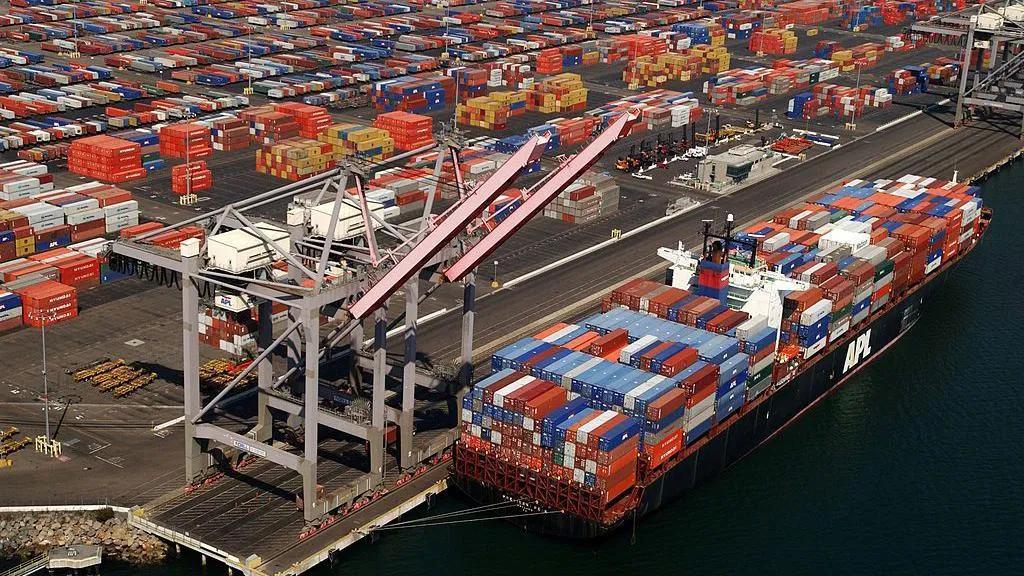Africa-Press – Uganda. The East African Community (EAC) recorded a strong upswing in international merchandise trade during the second quarter of 2025, underscoring the region’s resilience and growing competitiveness in global markets.
According to the latest EAC Quarterly Statistics Bulletin, total trade rose by 28.4% to USD 38.2 billion (Shs 144.1 trillion), up from USD 29.7 billion (Shs 112.1 trillion) in the same quarter of 2024.
This performance was driven largely by exports, which surged by 40.5% to USD 18.6 billion (Shs 70.1 trillion), reflecting rising global demand for EAC products.
Imports grew more moderately by 18.8% to USD 19.6 billion (Shs 73.8 trillion). As a result, the trade deficit narrowed significantly from USD 3.2 billion (Shs 12.1 trillion) to USD 0.9 billion (Shs 3.4 trillion), marking a notable improvement in the region’s external trade balance.
Trade with other African countries expanded by 42.9% to USD 9.3 billion (Shs 35.0 trillion), now accounting for 24.5% of total trade. Intra-EAC trade grew by 24.5% to USD 4.6 billion (Shs 17.3 trillion), representing 12.1% of total trade.
The EAC also deepened its commercial links with COMESA and SADC, which contributed 9.9% and 15.2%, respectively, to the region’s trade portfolio.
Exports were boosted by strong demand from China, the United Arab Emirates, South Africa, Hong Kong, and Singapore, which together absorbed 62.8% of total exports, up from 40.1% a year earlier.
Malaysia and South Africa registered the highest quarter-on-quarter growth. The top five export commodities copper, precious stones and metals, coffee and tea, mineral fuels, and ores accounted for 79.6% of total exports, compared to 77.2% in Q2 2024, highlighting the region’s growing specialisation in high-value goods.
China remained the leading source of imports, contributing USD 4.7 billion (Shs 17.7 trillion) or 24.2% of the total. The UAE, India, South Africa, and Japan also maintained strong positions, jointly accounting for more than half of the import bill.
Key imported commodities included petroleum products (USD 4.1 billion or Shs 15.4 trillion), machinery (USD 1.8 billion or Shs 6.8 trillion), vehicles (USD 1.5 billion or Shs 5.6 trillion), precious metals (USD 1.5 billion or Shs 5.6 trillion), plastics, and iron and steel products, reflecting continued investment in infrastructure, industry, and energy.
Overall, the EAC’s trade performance in Q2 2025 signals a dynamic and diversified regional economy. The narrowing trade deficit, rising exports, and expanding intra-African trade point to a positive trajectory for integration and sustainable growth.
The EAC Secretariat reaffirmed its commitment to fostering a conducive environment for trade and investment, enhancing value addition, and promoting shared prosperity across Partner States.
The bulletin also highlights that inflation in the region remains a concern. The Annual Headline (Year-on-year) Inflation in the EAC region, as measured by the EAC Harmonised Consumer Price Index (EAC-HCPI), stood at 22.7% in June 2025, down from 24.0% in May 2025. A year earlier, in June 2024, the rate was 13.7%.
“The annual average headline inflation for the 2024/25 financial year stood at 23.0%, up from 6.6% recorded for the 2023/24 financial year,” the bulletin revealed.
This sharp increase was attributed mainly to South Sudan and Burundi, which registered inflation rates of 179.4% and 34.1%, respectively.
Core inflation, which excludes food and energy prices, stood at 19.3% in June 2025, down from 23.6% in May 2025. A year earlier, the rate was 15.0% in June 2024, indicating persistent but easing underlying price pressures.
On monetary conditions, the bulletin noted that short-term interest rates increased across most EAC Partner States in Q2 2025, except in Kenya, where the 91-day Treasury bill rate declined by 70 basis points to 8.2%.
Uganda and Burundi recorded the highest Treasury bill rates at 11.2% and 8.6%, respectively.
The lending rate declined in Kenya and Tanzania, while Uganda recorded the highest increase of 140 basis points. Deposit rates declined or remained stable in most Partner States except for Tanzania, which saw an increase of 70 basis points.
South Sudan registered the widest interest rate spread at 13.7%, whereas Tanzania recorded the narrowest at 6.5%.
“The EAC money supply (M3) grew by 19.1% year-on-year in Q2 2025, driven mainly by a 19.2% rise in credit to the private sector, reflecting continued monetary expansion across the region,” the bulletin stated.
These developments point to a region balancing strong trade growth with macroeconomic challenges, as EAC Partner States continue to pursue strategies aimed at deepening regional integration, stabilising inflation, and promoting inclusive economic progress.
For More News And Analysis About Uganda Follow Africa-Press






